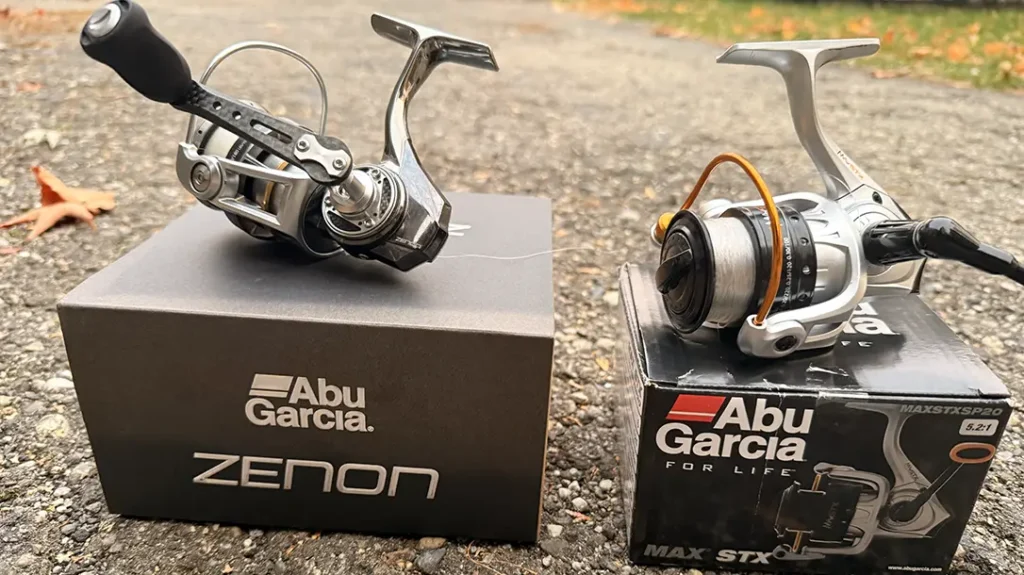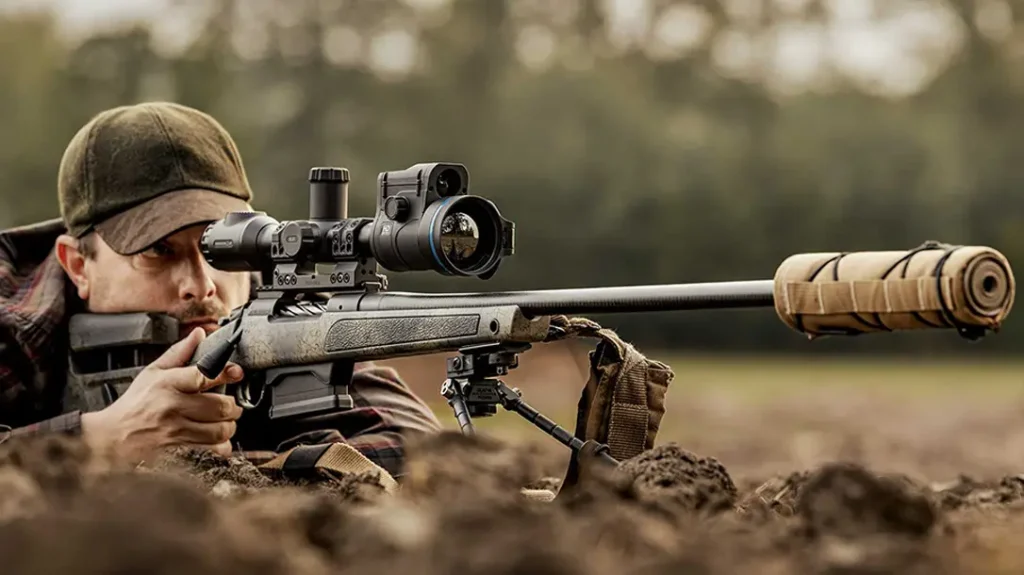From a ballistics and operational standpoint, it is pretty hard to beat the 300 Blackout, or 300 BLK, as a police carbine cartridge.
In a realistic police engagement, supersonic 300 Blackout ammunition will provide better terminal ballistics than the 5.56mm NATO. You can also utilize standard AR-15 magazines, which helps keep transition costs down, while the capacity remains the same. The 300 Blackout’s recoil is also the same, along with its reliability and accuracy. In essence, you get a better cartridge that works in the same platform, with minimal costs to make the switch.
- RELATED VIDEO: Seekins Precision’s 300 Blackout SBR
You’ll realize the 300 Blackout’s great advantage when you run it through a shorter barrel: Less velocity is lost, as compared to the 5.56mm. Add a suppressor and the 300 Blackout really shines. Nothing short of an AK in 7.62x39mm works as well, or remains as effective, as a pistol-length AR in 300 Blackout.
Advertisement — Continue Reading Below
Reliable subsonic 300 Blackout ammunition is another plus. Companies have been trying to load accurate and consistent subsonic 5.56mm and 7.62mm NATO loads for years, but they haven’t been very successful. This isn’t the case with the 300 Blackout—there are several reliable subsonic rounds on the market. While some are less than optimal for police work, this is changing. High demand for expanding bullets has provided more usable offerings, and more are on the horizon. When using an entry carbine with a short barrel and a suppressor, a subsonic cartridge that both penetrates enough and expands properly would be a huge advantage.
One of the biggest claims of the 300 Blackout is that you can interchange between subsonic and supersonic ammunition using the same receiver. It sounds great: Run subsonic ammo for entry duties, change magazines and use supersonic rounds for patrol. Unfortunately, in my experience, the theory has yet to match the reality. No previous rifle I’ve tested has been able to make this swap reliably without adjusting the gas output or changing the buffer and spring. Tuning the rifle to use one or the other has been my recommendation for anything approaching duty-level reliability. But Seekins Precision may have just changed all of that.
Gun Details
Advertisement — Continue Reading Below
While attending an open house at Seekins Precision’s new facility, I was able to test one of its Pro Series SPROV3 carbines in 300 Blackout with an 8-inch barrel. The SPROV3 features the company’s SP223 billet lower, which uses a standard carbine buffer and spring. Gemtech was also at the event, and the company provided its Sandstorm titanium suppressor for testing with the SPROV3 along with its Silencer Subsonic 187-grain ammunition. This polymer-tipped round is designed to expand at subsonic velocities. To my great surprise, this setup worked perfectly, all day, over hundreds of rounds. I spoke to Glen Seekins, the company’s founder and president, and he assured me that the SPROV3 would work with both supersonic and subsonic ammunition, so I immediately ordered one for testing.
My test SPROV3 carbine came with an 8-inch barrel surrounded by the company’s 12-inch MCSR handguard. Designed to cover most of the suppressor, it provides KeyMod mounting points along the 3, 6 and 9 o’clock axes. The stainless steel barrel is radially fluted and bead blasted. The muzzle sports 5/8×24-tpi threading, which should fit most .30-caliber suppressors. Within the handguard, surrounding the barrel, you’ll also notice cooling fins as well as an adjustable gas block. Seekins Precision also furnishes the upper with a BCM Gunfighter charging handle, a match-grade chamber, M4 feed ramps and an M16 bolt carrier group that exceeds military specifications for optimum reliability.
The SPROV3’s billet-crafted SP223 lower receiver features an ambidextrous bolt release, a unique magazine well, an ambidextrous Battle Arms Development safety selector, an extra-strong magazine release button and an enlarged triggerguard. While standard models come with ACT triggers, my test rifle came equipped with a Geissele SSA Super Semi-Automatic (SSA) two-stage trigger. Magpul’s STR carbine stock rides on the six-position buffer tube. Finally, the Ergo deluxe pistol grip provides for excellent control.
Advertisement — Continue Reading Below
I also tested the SPROV3 with a titanium Gemtech Sandstorm sound suppressor, which is one of the lightest on the market at only 13.3 ounces. I’ve used this suppressor on several rifles ranging from 6.5 Creedmoor to 7.62mm NATO without any issues. Added to the SPROV3, the carbine stays light, well balanced and controllable while providing excellent sound and flash suppression. For sighting, I mounted an Aimpoint PRO and a Trijicon VCOG.
Range Time
At the range, I began by testing the SPROV3’s reliability and functioning with both subsonic and supersonic 300 Blackout ammunition. Starting with Gemtech 187-grain Silencer Subsonic rounds, the carbine ran perfectly, spitting out brass as fast as I could pull the trigger. Moving to Remington 220-grain ammo, the carbine performed just as well. Next came the DoubleTap 240-grain ammo and Hornady’s 208-grain A-MAX—there wasn’t a single malfunction.
Advertisement — Continue Reading Below
The same thing happened with the supersonic ammunition. I loaded PNW’s 147-grain FMJs into an X Products X-15 drum magazine. Casings ejected at about 4 o’clock, recoil was not overly harsh, and the SPROV3 ran like a charm. All of the 110-grain ammunition ran well, too, although the ejection pattern was a bit more erratic. Lastly, I tested 125-grain rounds, which performed similarly.
I completed several drills, switching back and forth between subsonic and supersonic ammunition, without a single issue. All of the standard magazine testing was completed using Lancer L5AWM magazines. Other magazines will work, but these always work in this caliber, at least for me. The X-15 is my favorite X Products drum magazine. It does not add a ton of weight, it’s actually shorter than a 30-round magazine, and it seems to work really well. The only drawback is not holding open on the last round, but such is the price of being able to carry 50 rounds on board. It also would not cycle the subsonic ammo. By necessity, the X-15 has a bit more spring tension—it wasn’t an issue with any of the supersonic ammunition, but it was enough to stop the sub-
sonic from feeding. Loading the X-15 with 147-grain FMJs, the carbine was accurate, completely reliable and a ton of fun to shoot.
The SPROV3’s accuracy was excellent, with the 125-grain Remington rounds creating the best 100-yard group, which measured 0.65 inches. Groups at 50 yards using subsonic ammo were, as usual, astounding. Because of the lighter recoil, and using a good scope, I can usually cluster these rounds into one hole. Gemtech’s 187-grain ammo grouped five rounds into 0.45 inches at 50 yards. All of the subsonic ammo groups were less than an inch, and all the supersonic rounds grouped into less than 1.5 inches.
Advertisement — Continue Reading Below
As mentioned, velocity loss due to shorter barrel with this caliber is less dramatic than with the 5.56mm. Compared to my 10.2-inch Noveski barrel, velocity dropped around 100 fps across the board. Using a 110-grain Barnes TAC-TX bullet for comparison, the 300 Blackout from an 8-inch barrel still has roughly the same foot-pounds of energy on target as the 55-grain 5.56mm M193 round from a 16-inch barrel and a bunch more than a 10-inch-barreled 5.56mm. You’ll notice similar results if you compare the 125-grain 300 Blackout to the 77-grain 5.56mm. This is really the sweet spot for this caliber—there is just no way for a 5.56mm NATO rifle to come close when the barrel gets this short, especially when suppressed.
Final Notes
Seekins Precision has a winner here, as the SPROV3 ran every supersonic and subsonic 300 Blackout round without having to change the rifle’s configuration. The accuracy was excellent, the carbine functioned flawlessly, and I had a lot of fun.
Advertisement — Continue Reading Below
After shooting rapid-fire strings, especially with the subsonic ammo, the Sandstorm certainly was hot, but it remained usable. While this is less of an issue with supersonic rounds, you’ll still need to keep an eye on it. The Sandstorm never came loose, and it worked perfectly throughout the test.
- RELATED VIDEO: Test-Firing the New SP10 From Seekins Precision
If 300 Blackout ammunition ever becomes readily available at a cost closer to the 5.56mm’s, it may pose a real challenge to the status quo in the police carbine world. Until then, the 300 Blackout is a truly viable option for those who can find and afford the ammunition. One thing is certain: If you are looking for an SBR in this caliber, you really need to take a close look at this one!
For more information, visit seekinsprecision.com or call 208-743-3400.




























